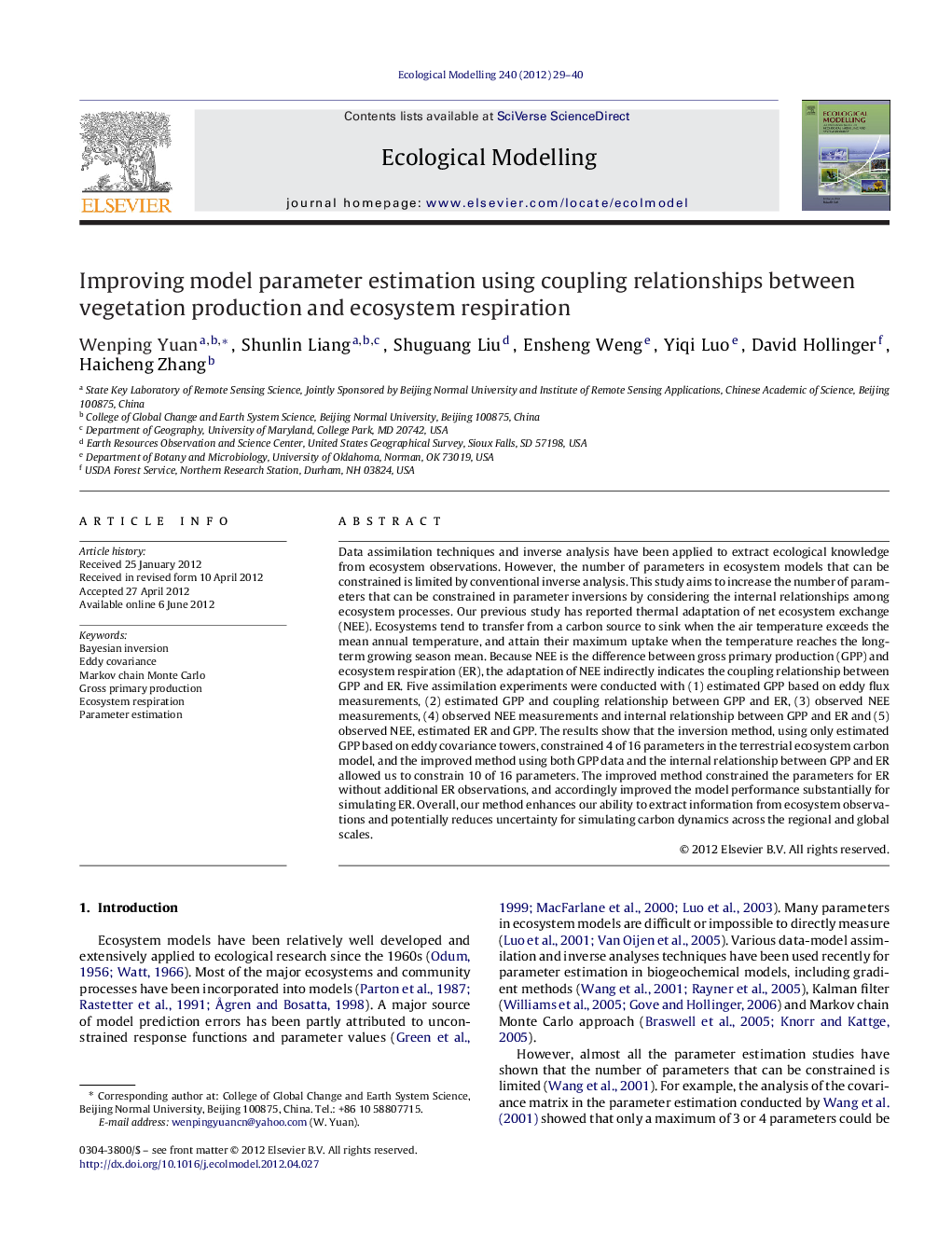| Article ID | Journal | Published Year | Pages | File Type |
|---|---|---|---|---|
| 4376410 | Ecological Modelling | 2012 | 12 Pages |
Data assimilation techniques and inverse analysis have been applied to extract ecological knowledge from ecosystem observations. However, the number of parameters in ecosystem models that can be constrained is limited by conventional inverse analysis. This study aims to increase the number of parameters that can be constrained in parameter inversions by considering the internal relationships among ecosystem processes. Our previous study has reported thermal adaptation of net ecosystem exchange (NEE). Ecosystems tend to transfer from a carbon source to sink when the air temperature exceeds the mean annual temperature, and attain their maximum uptake when the temperature reaches the long-term growing season mean. Because NEE is the difference between gross primary production (GPP) and ecosystem respiration (ER), the adaptation of NEE indirectly indicates the coupling relationship between GPP and ER. Five assimilation experiments were conducted with (1) estimated GPP based on eddy flux measurements, (2) estimated GPP and coupling relationship between GPP and ER, (3) observed NEE measurements, (4) observed NEE measurements and internal relationship between GPP and ER and (5) observed NEE, estimated ER and GPP. The results show that the inversion method, using only estimated GPP based on eddy covariance towers, constrained 4 of 16 parameters in the terrestrial ecosystem carbon model, and the improved method using both GPP data and the internal relationship between GPP and ER allowed us to constrain 10 of 16 parameters. The improved method constrained the parameters for ER without additional ER observations, and accordingly improved the model performance substantially for simulating ER. Overall, our method enhances our ability to extract information from ecosystem observations and potentially reduces uncertainty for simulating carbon dynamics across the regional and global scales.
► We improve the parameters estimation method using ecosystem process relationships. ► Ecosystem process relationships can increase the number of constrained parameters without extra observations. ► Ecosystem process relationships can improve the model performance.
